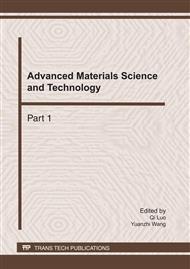p.890
p.896
p.902
p.908
p.914
p.919
p.926
p.932
p.937
Acoustic Reconstructing Method in Prolate Spheroidal Coordinate System
Abstract:
An acoustic reconstructing method in prolate spheroidal coordinate system is proposed in this paper. Firstly, the entire acoustic field in prolate spheroidal coordinate system is divided by some infinite domains and every domain has some nodes. Then pressure functions are determined by requiring the assumed-form solution to satisfy the pressure boundary condition at the measured points. Finally, once nodal pressures are specified, the acoustic pressure everywhere is completely determined due to the known pressure function. The efficiency and precision of reconstruction can be significantly enhanced and satisfactory reconstruction can be obtained with relatively few measurements using the new method. The new method proposed in this paper is suitable for the acoustic sources with a characteristic aspect ratio y:z close 1:1 and x at random, which extends the appropriate application domain of traditional acoustic reconstructing method largely.
Info:
Periodical:
Pages:
914-918
Citation:
Online since:
January 2011
Authors:
Price:
Сopyright:
© 2011 Trans Tech Publications Ltd. All Rights Reserved
Share:
Citation:


